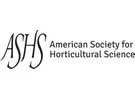Container-grown nursery stock accounts for 68% of the 4.5-billion-dollar nursery industry according to the 2019 Census of Horticultural Specialties. Compared to traditional field (in-ground) production, containerized production offers higher plant densities, does not require arable land, and has a faster production cycle. However, this unique, intensive production style has its challenges.
Due to the restricted rooting volume and the container substrate’s limited ability to store nutrients, container-grown plants require frequent (1+ times daily) irrigation and fertilizer that continually replenishes the root zone with soluble mineral-nutrients (e.g., nitrogen, phosphorus, potassium, etc.). In addition, growers tend to over-irrigate and apply more fertilizer than is needed for optimal growth, as the perceived consequences of undersupplying water and nutrients are more imminent. As a result, the irrigation or stormwater draining from containers is often high in phosphorus—the nutrient associated with toxic algal blooms that annually plague the Chesapeake Bay, Gulf of Mexico, Lake Erie, Lake Okeechobee, and other surface waters across the U.S.
ASHS will hold a webinar on August 31, which will provide an overview of research-validated strategies for improving phosphorus efficiency and reducing phosphorus runoff from container nurseries with a focus on the use of ferrous sulfate to enhance phosphorus retention in the substrate. Click here to register.
For more information: American Society for Horticultural Science (ASHS)
American Society for Horticultural Science (ASHS)
ashs.org
Sign up for our daily Newsletter and stay up to date with all the latest news!
Subscribe I am already a subscriber